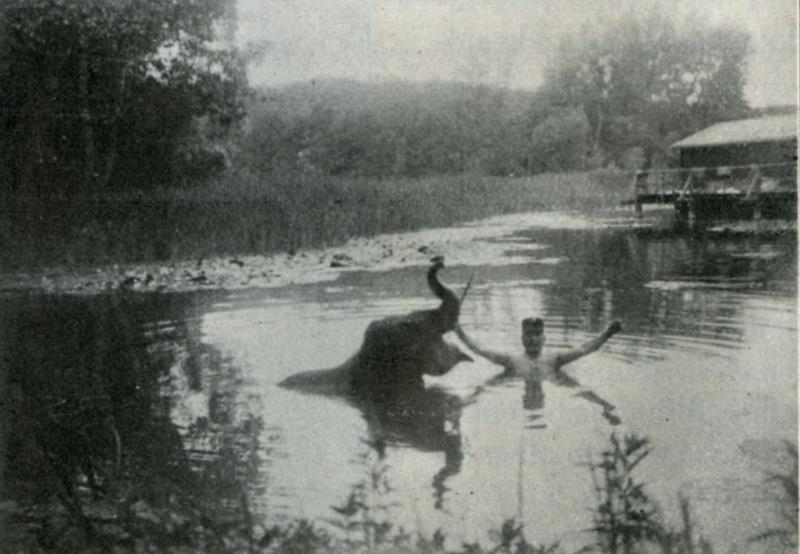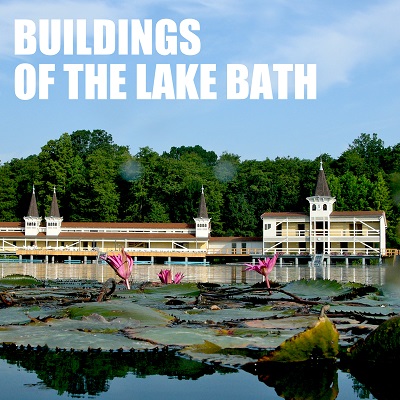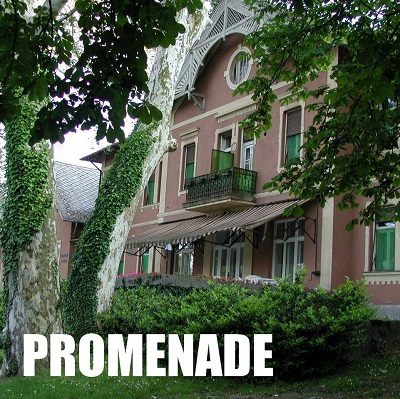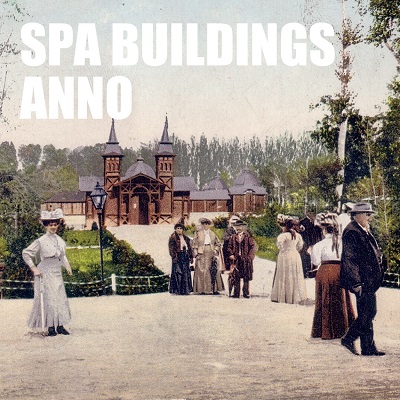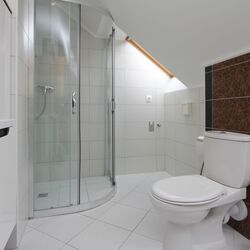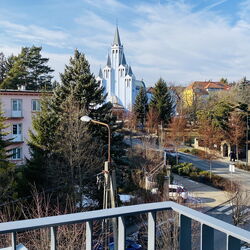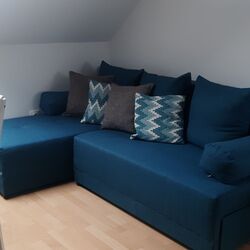The parts of the Hévíz Bath nowadays
- Entrance of the Lake with the cherub statues on the dr. Schulhof Vilmos Promenade.
- Central Building with 4 indoor pools and rooms and terraces for relaxing. Easily accessible from the direction of Festetics Spa on a floating corridor which was built on the Lake on poles.
- Festetics Spa, the southern entrance of the Lake which is accessible from Ady E. street. This is the newest building of the Lake where the wellness services are available.
- Mud pools which are located in the Lake just between the Central Building and Festetics Spa.
- The entrance from Deák Square also known as the Summer Entrance because it is only open seasonally.
- The summer dressing room, which stands on the eastern shore of the Lake. It is a building made of wood which is located next to the sunbathing terraces.
- The „Medve” sunbathing terrace is a separated sunbathing terrace on the southern east part of the Lake.

Dr. Schulhof Vilmos Promenade
The Promenade is part of the park, located around the thermal lake. The Dr. Schulhof Vilmos Promenade is starting from the “Indoor bath” („télifürdő”) building, located at the end of the pedestrian zone and it leads to the main entrance of the thermal lake.
Hévíz Lake is situated on one side of the Promenade, which is shaded by sycamore trees and bordered by benches, while on the other side we can find the historical buildings of Szent András Reumakórház (Saint Andrew’s Hospital for Rheumatic Diseases). These buildings were built in the 1870s and they were transformed into the current two-storey structures in the beginning of the 1900s.
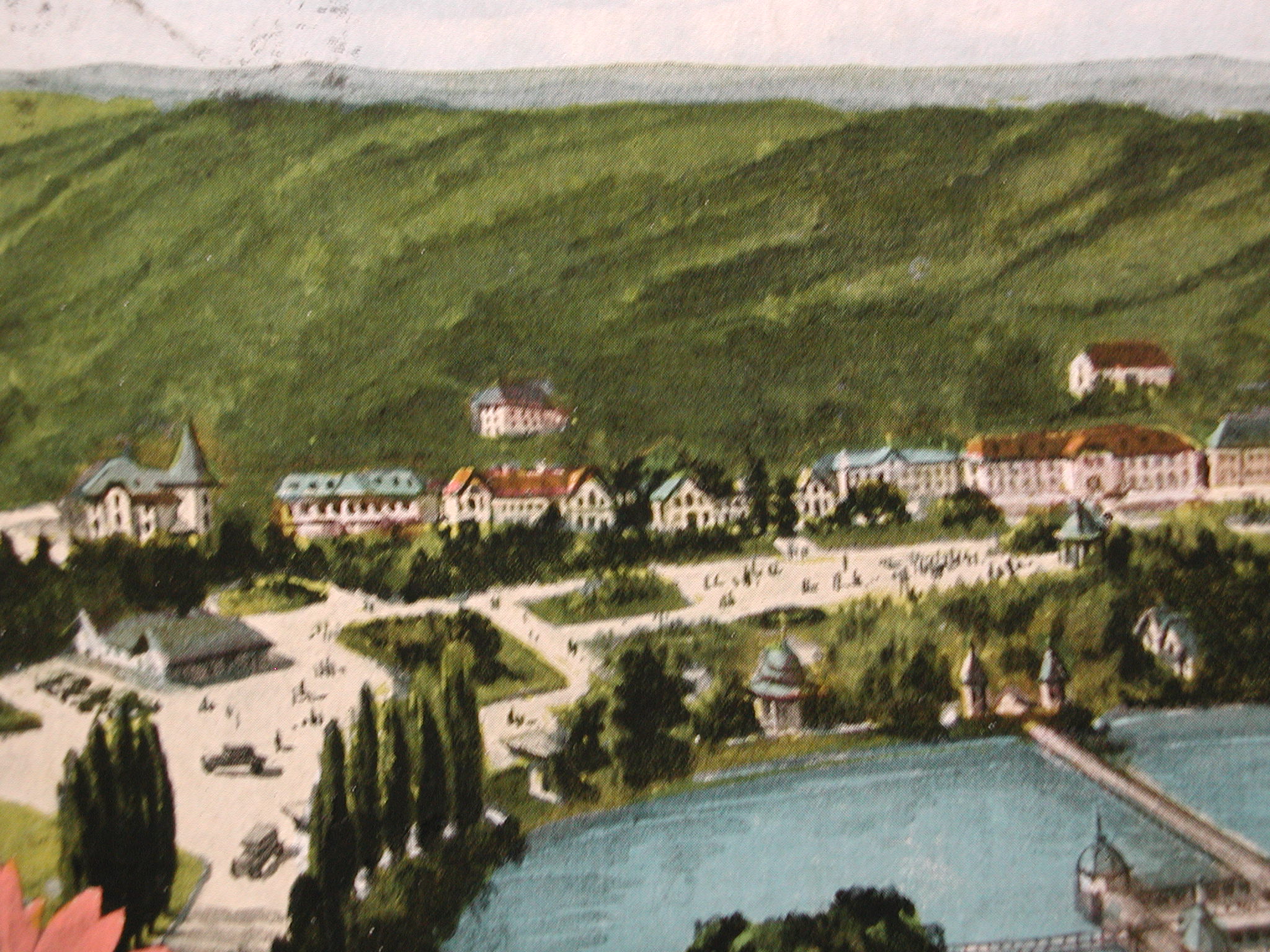
Each house got its own history.
If we carry on towards south, the next building is a restaurant and assembly hall. The border of the Festetics Estate stretched to this building; this was the first house built from stone. It was built at the end of the 1860s for accommodating guests of the thermal bath. An additional storey was added to the building in 1909, and it became a “Cure Saloon” („Kúrszalon”), which at the time was necessary at bathing resorts. Currently the assembly hall of Szent András Reumakórház (Saint Andrew Rheumatologic Hospital) can be found here.
The history of the Hévíz Bath
Spa Hévíz between 1795 and 1905
The first rectangular bathhouse, consisting of two buildings, was built in 1795 by the landowner Count I. Festetics György. The news on the benefits of the medicinal water reached Vienna in 1801, and the presence of the white water lilies in the lake was already mentioned in a memoir in 1818. Additional Indian species were planted to these water lilies in 1898. In 1858, afforestation around the lake, modernisation of the spa buildings and development of the lakeside buildings for guests started. In the centre of the lake, the male and female mirror baths (baths surrounded with cabins) were located, but many people still used the sluice of Hévíz, which was wider that time, for swimming.

Spa Hévíz in the 1910s and 1920s
From 1905, leaseholder Reichl Vencel did his best to develop Hévíz into an international spa town. The former bathhouse was replaced by a domed building, and it is also due to him that a number of modern accommodation and restaurants, and the „Cure Salon”, essential to the health resort, were built. In 1907, on the site of the old built bridge, a roofed bridge was erected and the characteristic two-towered main entrance was completed. In the same year, the Sanatorium and Spa Hotel of Hévíz was built. In 1911, the town received the „spa resort-like settlement” title.
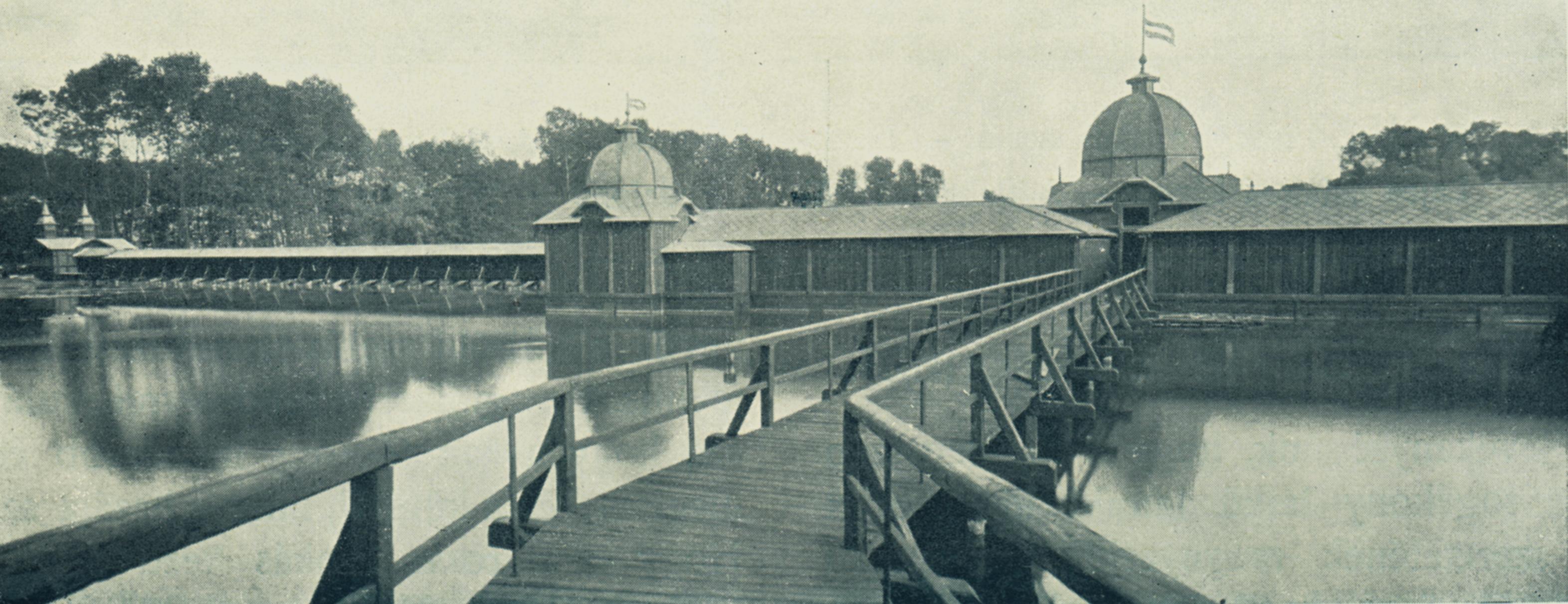
Spa Hévíz in the 1930s
After 1926 development started up again. The characteristic lakeside bathhouse was built, as well as the main building received a glass roof in 1932 and thus it became completely covered. In 1930, there was already 7 hotels, 11 restaurants and 40 villas in the village. Varied cultural life awaited the almost 16 thousand guests who came her annually. In these years of happy peace time Dr Schulhof Vilmos was the chief physician in Hévíz. He did a lot through his work to popularise the therapeutics of Hévíz. Today, the promenade beside the lake is named after him.

Buildings of Hévíz before 1945
Contemporaneously with the completion of the first bathhouse (1795), the „cupping house” used for healing (venesection=scarification) was erected. Whereas the surrounding area of the lake was merely a reedy, marshy area in the first half of the 19th century, from the 1850s a beautiful choice of hotel buildings was built on purpose. In 1870, the Houses I to VII, out of which the House No. Seven was the only two-story building, were already completed. A Roman Catholic chapel was also built (it was demolished later), then in the beginning of the 1900s the hotels, bazaar buildings, as well as the „Cure Salon”, where balls and concerts were held, were finished.
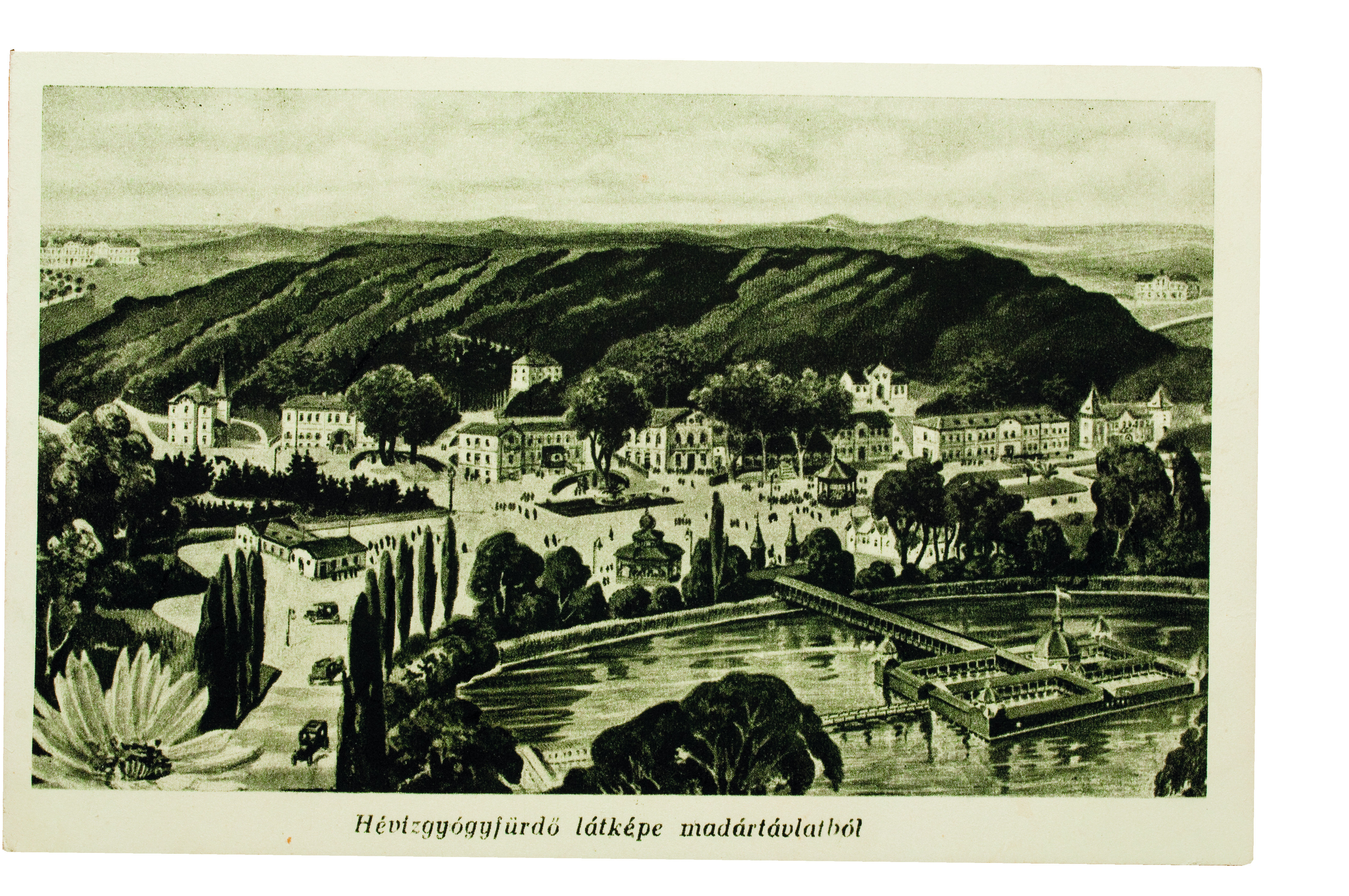
Spa Hévíz in the 1950s and 1960s
In 1948, the thermal lake and all related buildings and parks, which were owned by the Festetics Family up to that time, were nationalised and the period of state-subsidised holidays began. In 1952, the National Spa Hospital of Hévíz was established and later this year Hévíz was declared a health resort of national importance. By 1968, the country's most modern spa building fully equipped with balneo-therapeutic medical devices. Dr Moll Károly, the internationally renowned rheumatologist physician, who invented the weight bath, started his work during this period.

Spa Hévíz in the 1970s and 1980s
In the 1970s tourism increased to such an extent – thanks to the western guests too – that the building of additional quality hotels and the rebuilding of the thermal lake buildings were needed. The former domed buildings were replaced by larch-covered, towered buildings from 1977 continuously. The total renovation was completed by 1985, but the visitors could not enjoy the new facility for a long time since it was completely destroyed as a result of a fire on 3rd March 1986. Finally, the new buildings were finished in 1989.
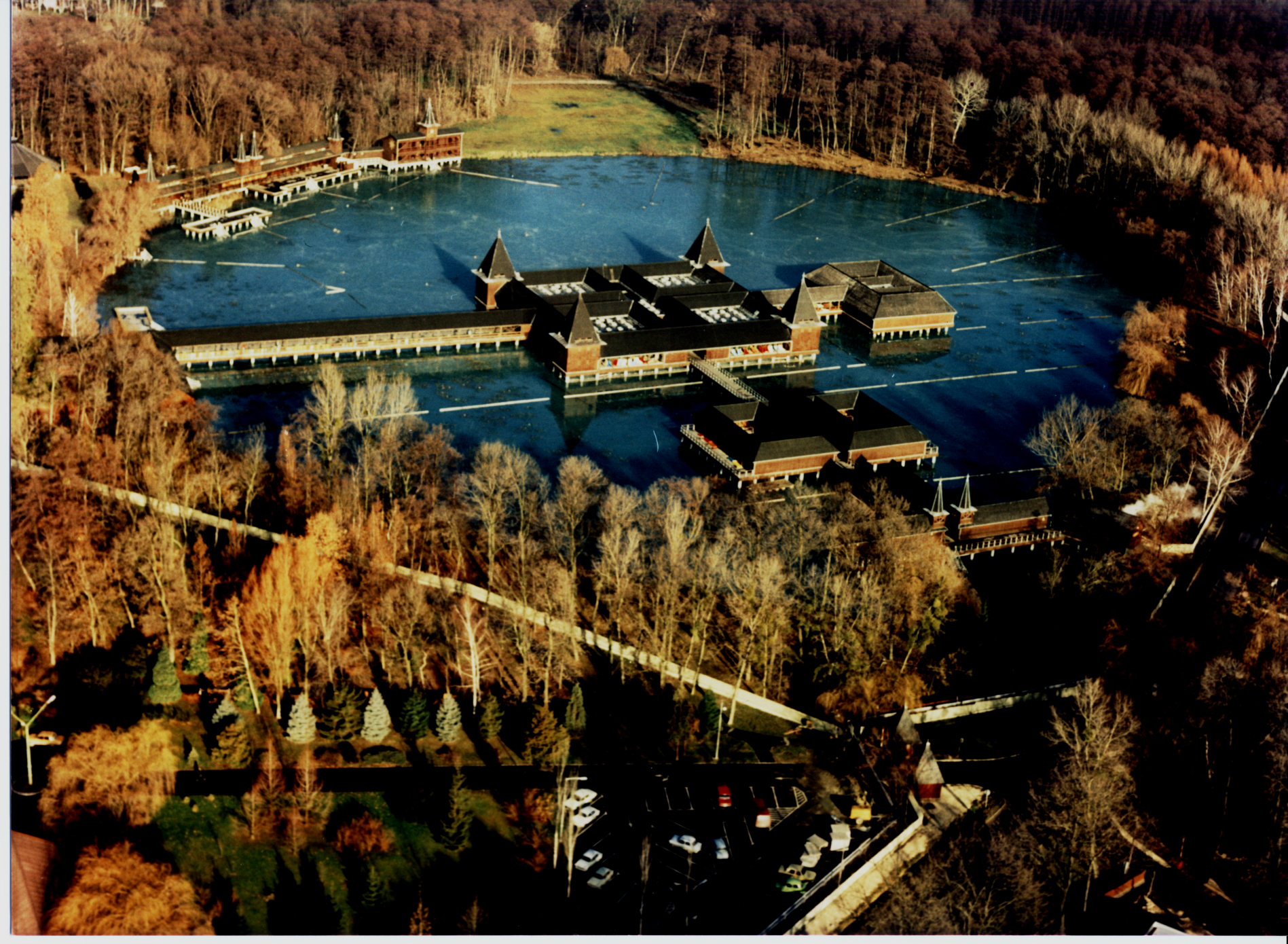
Traditional Hévíz Therapy
People could read about the beneficial effects of Hévíz medicinal water in 1780 for the first time. Initially, in addition to bathing, only bloodletting was applied as a therapy, the sanatorium was built in 1907 in the village. The first famous doctor of the village was Schulhof Vilmos, who already used electrotherapy and x-rays, in addition to bathing, in the musculoskeletal rehabilitation. From the 1950s the work of Dr Moll Károly put new life into the Hévíz therapy, the country's most modernly equipped balneo-therapeutic bathhouse was completed in the village in 1968.
Since then, services have increased with a wide spectrum of treatments, but the basis of the Traditional Hévíz Therapy is still the following: bathing in medicinal water, medicinal mud wrap or mud bath and weight bath by Moll Károly. These can be individually supplemented by drinking cure, medicinal massage, movement-, physio- or hydrotherapy.
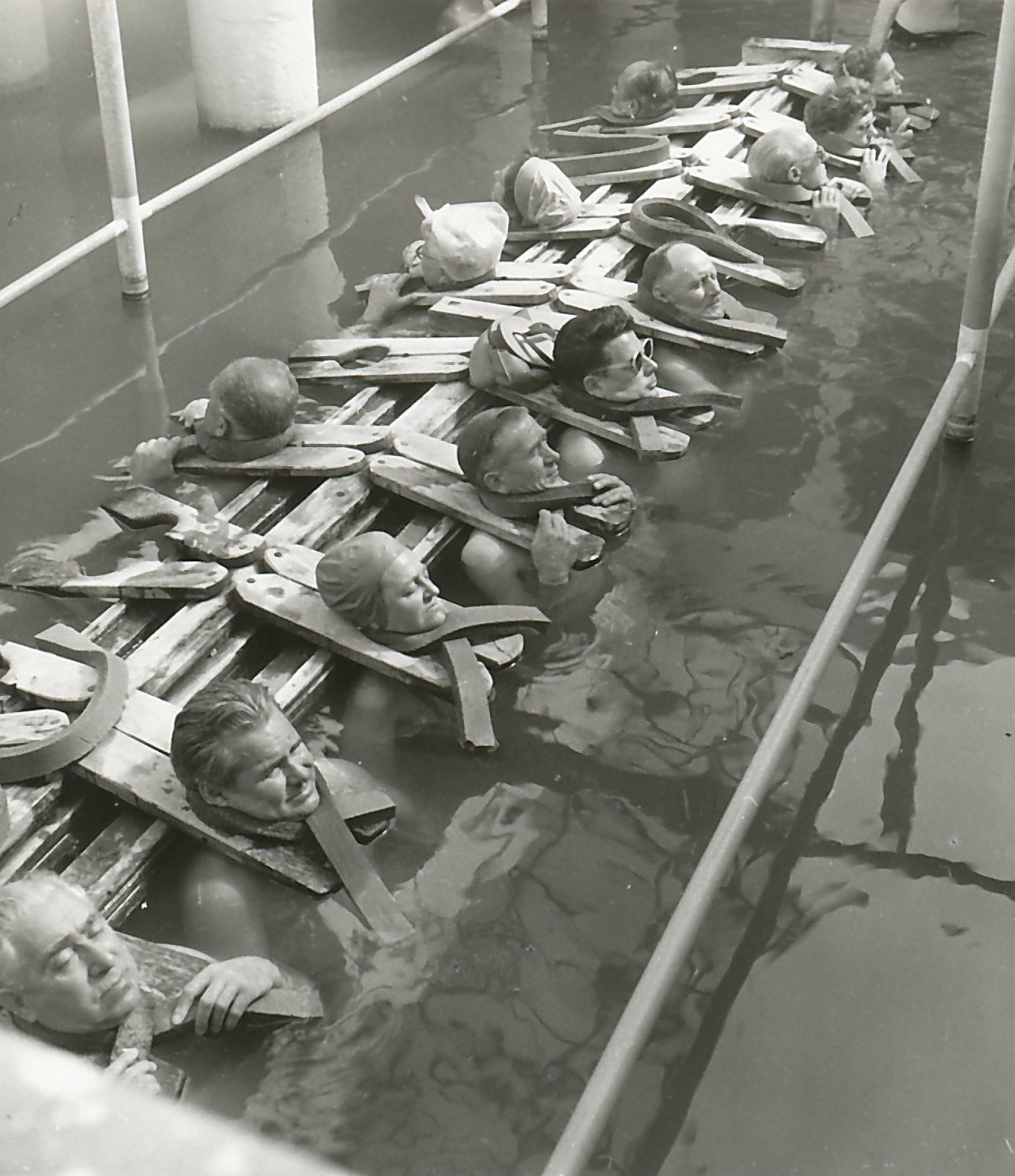
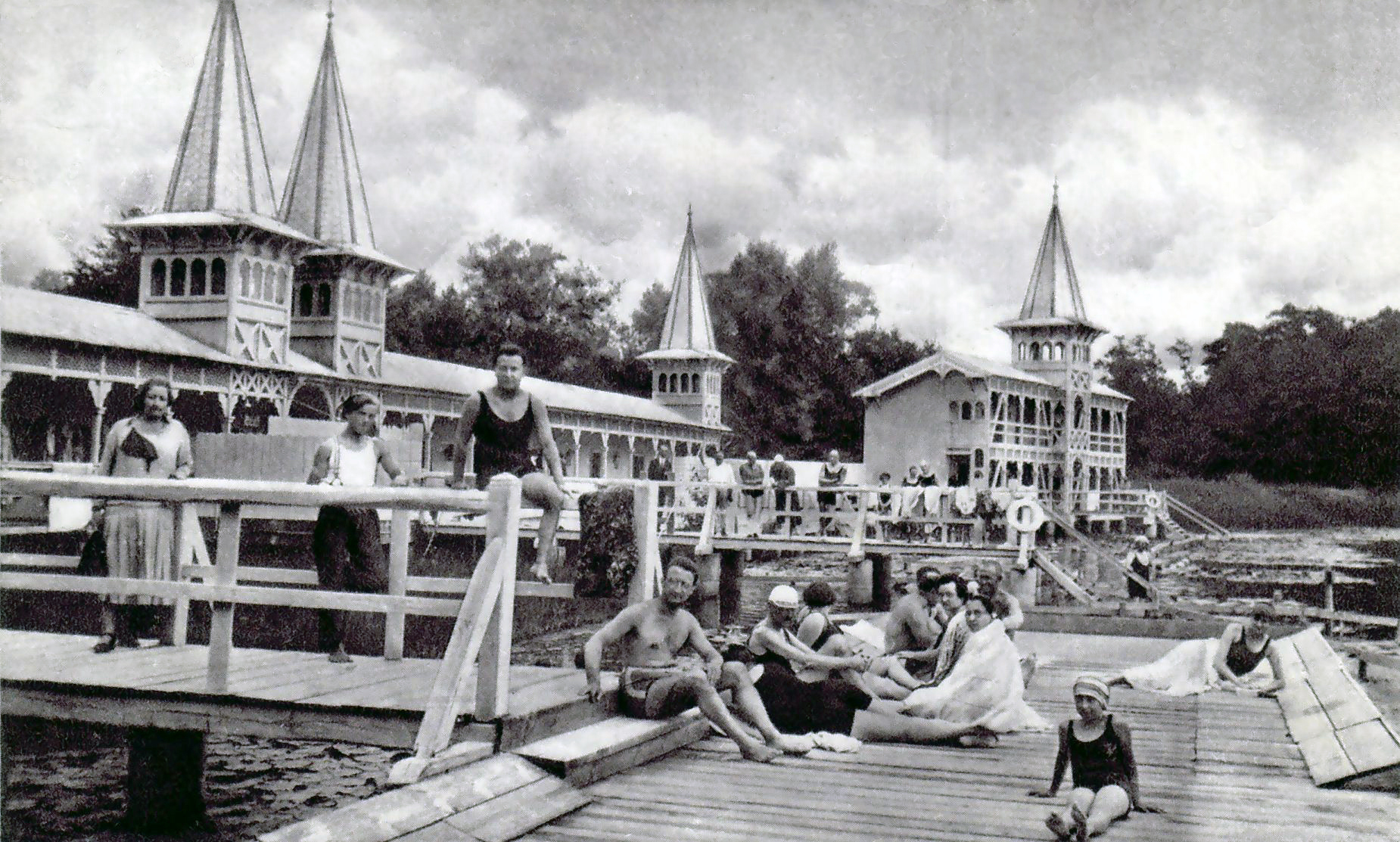
Kind memories of Hévíz
During the last 220 years, the spa resort attracted a number of visitors, who could be celebrities or less famous people, or in exceptional cases even animals, who became famous. Whereas it was quite natural that animals were driven into the water in the 1800s, in 1914, it caused a great sensation when Nelly, the sore-legged elephant was moved to Hévíz. Bathing in muddy medicinal water twice a day was prescribed to the former circus elephant and she performed it with great enthusiasm. The 3-year-old elephant was so popular that she became an extra tourist attraction to the town and the visitors surprised her with basketful of goodies, such as fresh cherries, every day.
